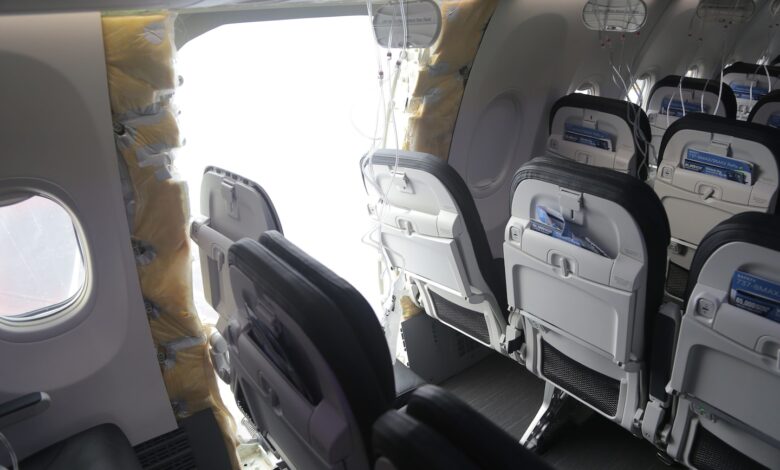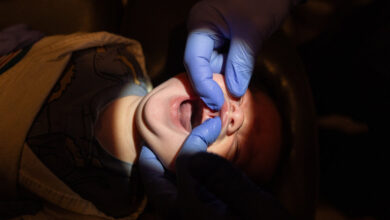Inspections to begin on Boeing 737 Max 9 aircraft

“The safety of our airplanes and everyone who steps onboard is a core Boeing value,” Stan Deal, commercial airplanes president and chief executive, and Mike Delaney, chief aerospace safety officer and senior vice president of global aerospace safety, wrote in a message to employees Monday. “We agree with and fully support the FAA’s decision to require immediate inspections of 737-9 MAX airplanes with the same configuration as the affected airplane.”
Deal and Delaney noted that the affected assembly is not found on other versions of 737 Max jets.
The executives said that as part of that effort, Boeing teams, with thorough FAA review, have provided comprehensive, technical instructions needed by airline operators, another step that would clear the way for the required inspections to begin.
“The FAA’s priority is always keeping Americans safe,” the FAA said in a statement, adding that all Boeing 737-9 aircraft would remain grounded until operators have completed the enhanced inspections.
As part of that, inspections will be require of both left and right cabin door exit plugs, door components and fasteners. Operators must also complete corrective action requirements based on findings from the inspections before bringing any aircraft back into service, the FAA said.
News that inspections can begin came as the NTSB announced late Sunday that they had recovered a key portion of evidence — the door plug that blew out of the Alaska Airlines flight over Portland, Ore.
Jennifer Homendy, the NTSB chair, announced that it has been found in the yard of a schoolteacher.
During a briefing Sunday night, Homendy also said that Alaska Airlines recorded that the plane’s auto-pressurization fail light — which is designed to signal failures in controlling cabin pressure — had illuminated on three flights in the weeks before Friday’s incident. Those reports, on Dec. 7, Jan. 3 and Jan. 4, prompted tests and a reset from maintenance, Jennifer Homendy, chair of the National Transportation Safety Board (NTSB), said in a news conference Sunday evening.
She added that the airline restricted the plane from flying to Hawaii in case it would need swift landing, and that a later request from Alaska Airlines for a deeper look had gone unfulfilled before the incident Friday.
“It’s certainly a concern, and it’s one that we want to dig into,” Homendy said. She added that it is unclear whether the light is linked to the accident and said that it’s possible the light could have malfunctioned independently of the plane’s auto-pressurization system.
Flight 1282 was on its way to Ontario, Calif., from Portland before it was forced to return to the airport after the door plug — an exit that is paneled off, usually because it is deemed optional in safety regulations — separated from the plane midair, shortly after takeoff.
The blowout caused a loud banging sound and frigid, whipping winds to pour into the aircraft.
The cockpit door immediately flew open, banging into a lavatory door and jolting the first officer forward, causing her to temporarily lose her headset, Homendy said, citing interviews with flight attendants. The captain and the first officer were able to put on oxygen masks and turn on a speaker, but “communication was a serious issue,” she said.
Flight attendants described trouble getting information from the flight deck, and passengers in the cabin struggled to hear announcements. “It was very violent,” Homendy said.
Investigators who examined the grounded plane after the accident found that the headrests of two seats directly adjacent to the door plug were missing, as well as the back of one seat.
One flight attendant suffered minor injuries, according to the union that represents Alaska crews, The Washington Post reported. Several passengers required medical attention for injuries, the airline said. The flight was carrying 171 passengers and six crew members.





